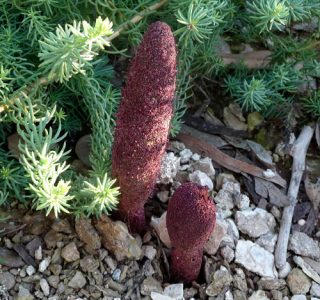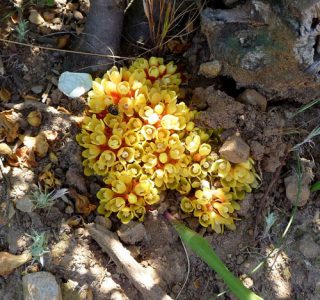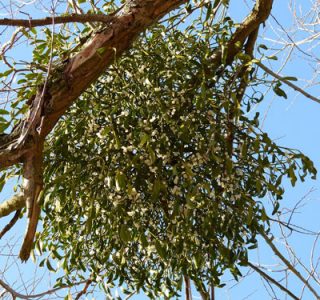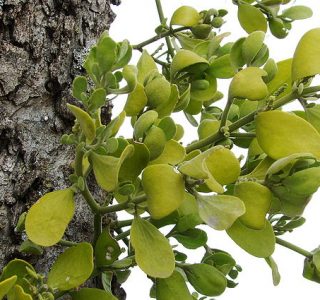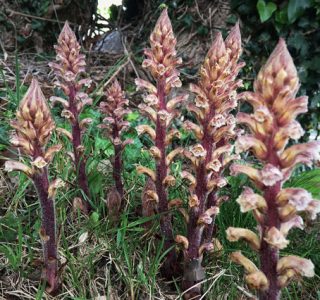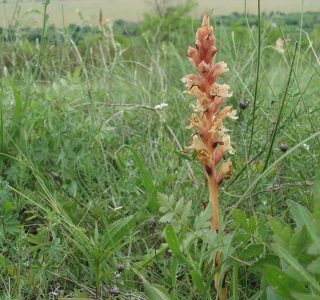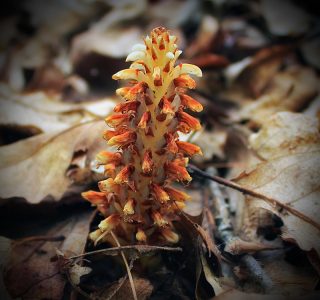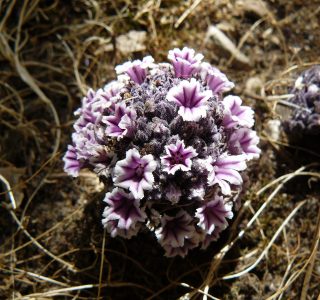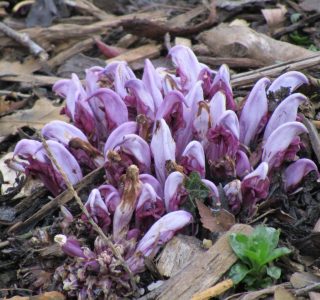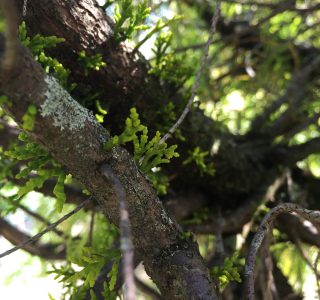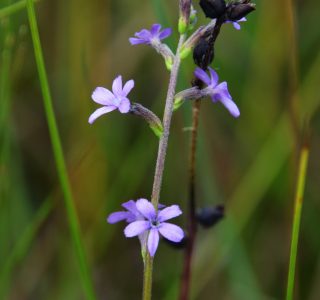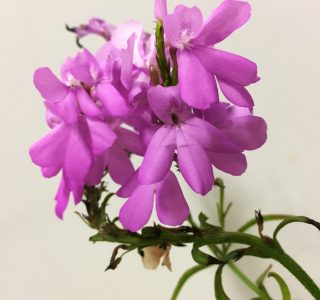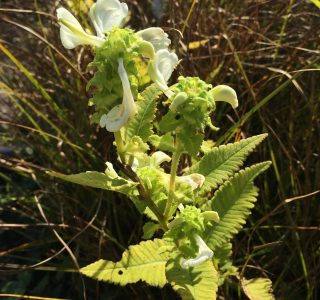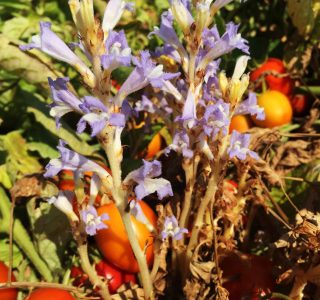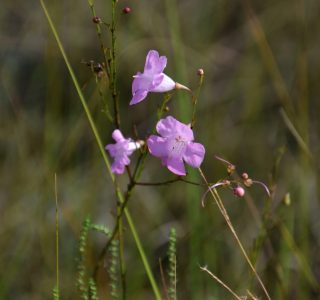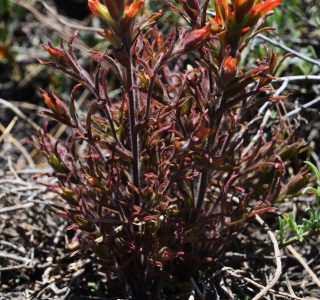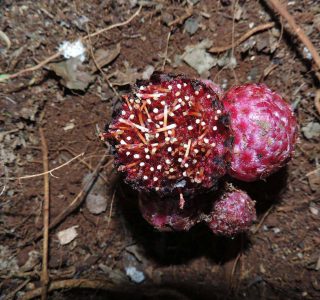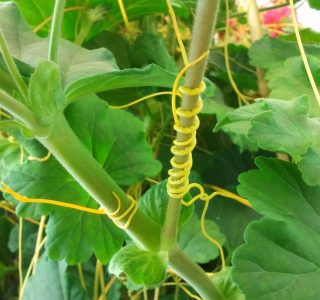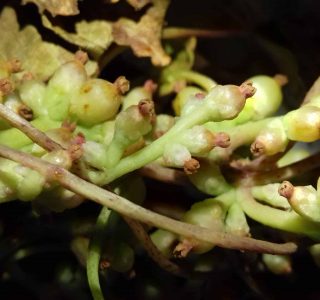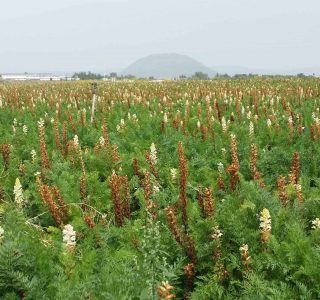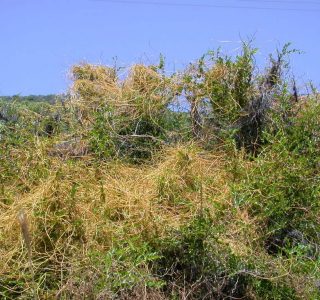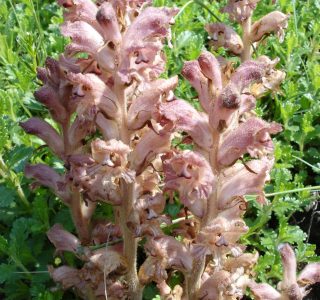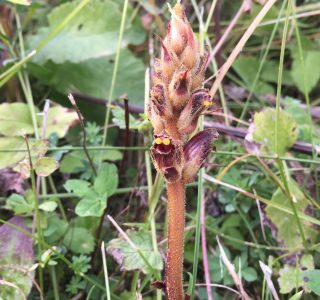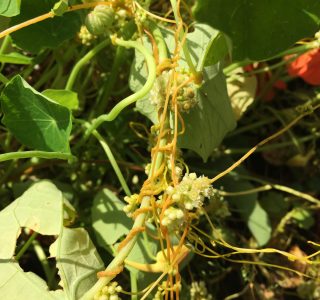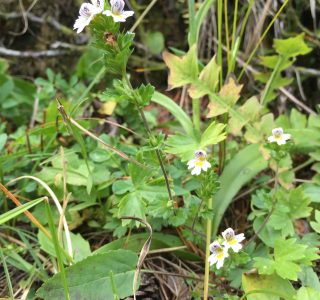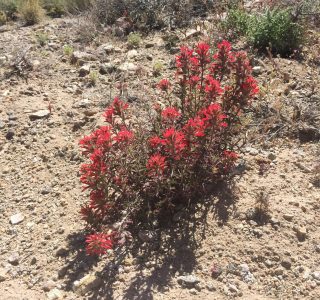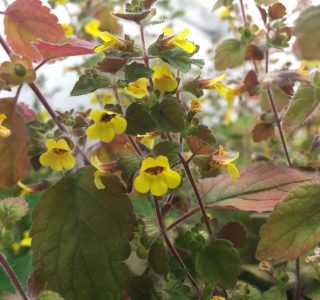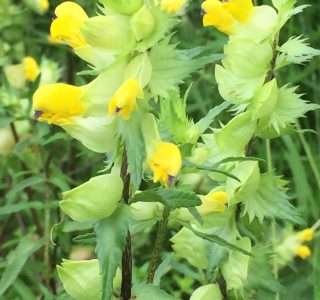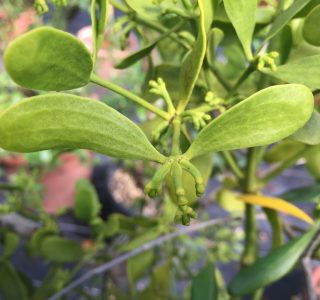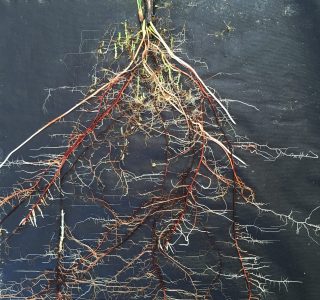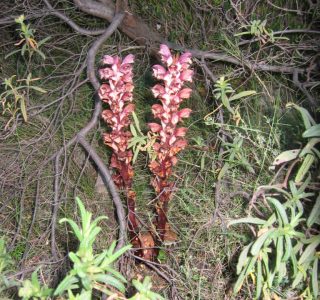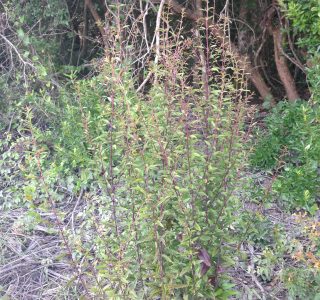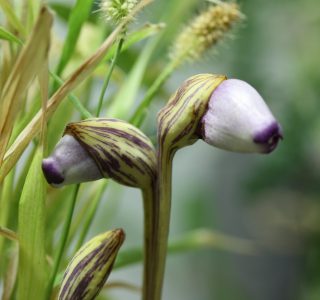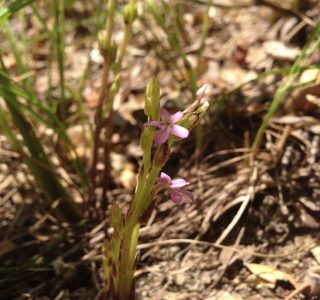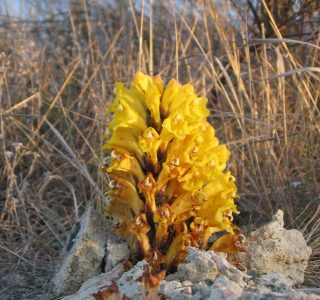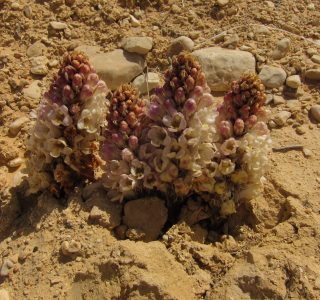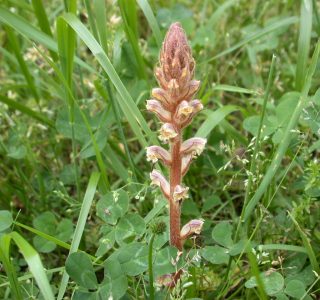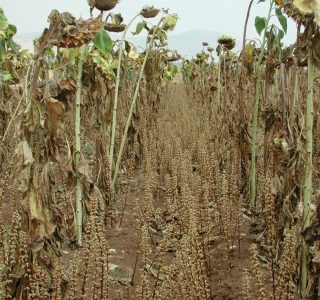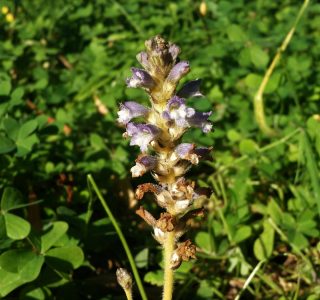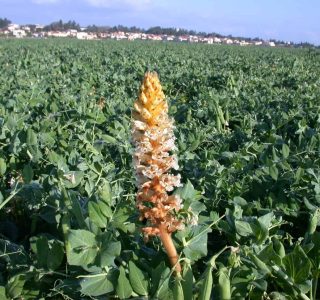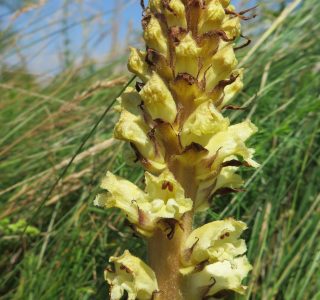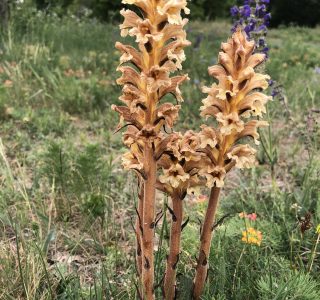
International Parasitic Plant Society
Welcome to the homepage of the International Parasitic Plant Society (IPPS). The IPPS is dedicated to advancing scientific research on parasitic plants. Our goals include increasing the understanding of these amazing plants, providing a platform for exchange among and beyond the scientific community as well as helping to decrease the crop damage inflicted by weedy parasitic plants.
- Researchers Identify Microbes That Help Plants Thwart Parasite
- New paper: Host interactions, pathology, economic impacts and management of the facultative parasitic weed Rhamphicarpa fistulosa
- Screening tropical and sub‑tropical maize germplasm for resistance to Striga hermonthica and S. asiatica and yield‑related traits
- New paper: “Macronutrient application rescues performance of tolerant sorghum genotypes when infected by the parasitic plant striga”
- Travel grants awarded – 17th World Congress on Parasitic Plants, 3–7 June 2024, Nara, Japan, .
- IPPS Executive Committee Election 2024
Upcoming: The 17th World Congress On Parasitic Plants (WCPP): 3–7 June 2024, Nara, Japan.
For more information see the website and Society news
Member benefits
Discount
Get a member discount for our biennial congress
Meet
Entry in and access to the member’s directory
Inform & get informed
Have access to IPPS seminars; post news on parasitic plants
Meet our talent
Post vacancies for jobs in parasitic plant research
A picture tells
Non-commercial usage rights of the photo gallery
Most recent ‘Parasitic Plant’ publications
on the Web
Most recent 'Parasitic Plant' publications
in Scopus
- Management of the Striga epidemics in pearl millet production: a review Armel Rouamba, Hussein Shimelis, Inoussa Drabo, Kwame Wilson Shamuyarira, Emmanuel Mrema CABI Agriculture and Bioscience, volume 5 Tuesday 16 April 2024 Pearl millet (Pennisetum glaucum [L.] R. Br.) is a drought-resilient and nutritious staple food crop widely cultivated in arid and semi-arid regions. Worldwide, pearl millet is ranked the 6th most widely produced cereal crop after wheat, rice, maize, barley, and sorghum, with a total production of 30.5 million tons on 32.1 million hectares. In Burk... Pearl millet (Pennisetum glaucum [L.] R. Br.) is a drought-resilient and nutritious staple food crop widely cultivated in arid and semi-arid regions. Worldwide, pearl millet is ranked the 6th most widely produced cereal crop after wheat, rice, maize, barley, and sorghum, with a total production of 30.5 million tons on 32.1 million hectares. In Burkina Faso, it is the 3rd widely cultivated crop next to sorghum and maize, with a mean yield of 0.8 ton ha−1, far below the potential yield of 3.0 tons ha−1 attributable to various production challenges. Among the production constraints, the parasitic weed Striga species, particularly S. hermonthica is endemic and causes up to 80% yield losses under heavy infestation. Different control methods (e.g., cultural practices, chemicals and bio-herbicides) have been recommended, but they have been largely ineffective due to diverse and complex problems, including the life cycle, seed production, and prolonged seed dormancy of S. hermonthica; poor access and cost of implementation. Breeding for host plant resistance presents a cost-effective, environmentally friendly and affordable method for smallholder farmers to control and reduce Striga infestations and improve pearl millet yields. Therefore, the objectives of this study were to present the impact of S. hermonthica damage on pearl millet production and productivity and assess the effectiveness of different management methods of S. hermonthica with an emphasis on host plant resistance. The first section of the review assesses the impact of Striga infestation on pearl millet production, followed by the developmental stages of Striga, Striga infestation and damage management strategies, breeding for Striga resistance and other Striga control methods. The paper summarises genetic resources, new breeding technologies, and innovations for the precision and speed breeding of Striga-resistant cultivars. The review will guide the use of the best breeding strategies and accelerate the breeding of new pearl millet cultivars that are best-performing and resistant to S. hermonthica to reduce damage incurred by Striga infestations on farmers’ fields in Burkina Faso and related agro-ecologies.
- Rising from the shadows: Selective foraging in model shoot parasitic plants Thomas Bawin, Kirsten Krause Plant Cell and Environment, volume 47, pages 1118-1127 Tuesday 16 April 2024 Despite being sessile, plants nonetheless forage for resources by modulating their growth. Adaptative foraging in response to changes in resource availability and presence of neighbours has strong implications for performance and fitness. It is an even more pressing issue for parasitic plants, which draw resources directly from other plants. Indeed... Despite being sessile, plants nonetheless forage for resources by modulating their growth. Adaptative foraging in response to changes in resource availability and presence of neighbours has strong implications for performance and fitness. It is an even more pressing issue for parasitic plants, which draw resources directly from other plants. Indeed, parasitic plants were demonstrated over the years to direct their growth towards preferred hosts and invest resources in parasitism relative to host quality. In contrast to root parasites that rely mostly on chemical cues, some shoot parasites seem to profit from the ability to integrate different types of abiotic and biotic cues. While significant progress in this field has been made recently, there are still many open questions regarding the molecular perception and the integration of diverse signalling pathways under different ecological contexts. Addressing how different cues are integrated in parasitic plants will be important when unravelling variations in plant interaction pathways, and essential to predict the spread of parasites in natural and agricultural environments. In this review, we discuss this with a focus on Cuscuta species as an emerging parasitic model, and provide research perspectives based on the recent advances in the topic and plant–plant interactions in general.
- Comparative secretome analysis of Striga and Cuscuta species identifies candidate virulence factors for two evolutionarily independent parasitic plant lineages James M. Bradley, Roger K. Butlin, Julie D. Scholes BMC Plant Biology, volume 24 Monday 15 April 2024 Background: Many parasitic plants of the genera Striga and Cuscuta inflict huge agricultural damage worldwide. To form and maintain a connection with a host plant, parasitic plants deploy virulence factors (VFs) that interact with host biology. They possess a secretome that represents the complement of proteins secreted from cells and like other pl... Background: Many parasitic plants of the genera Striga and Cuscuta inflict huge agricultural damage worldwide. To form and maintain a connection with a host plant, parasitic plants deploy virulence factors (VFs) that interact with host biology. They possess a secretome that represents the complement of proteins secreted from cells and like other plant parasites such as fungi, bacteria or nematodes, some secreted proteins represent VFs crucial to successful host colonisation. Understanding the genome-wide complement of putative secreted proteins from parasitic plants, and their expression during host invasion, will advance understanding of virulence mechanisms used by parasitic plants to suppress/evade host immune responses and to establish and maintain a parasite-host interaction. Results: We conducted a comparative analysis of the secretomes of root (Striga spp.) and shoot (Cuscuta spp.) parasitic plants, to enable prediction of candidate VFs. Using orthogroup clustering and protein domain analyses we identified gene families/functional annotations common to both Striga and Cuscuta species that were not present in their closest non-parasitic relatives (e.g. strictosidine synthase like enzymes), or specific to either the Striga or Cuscuta secretomes. For example, Striga secretomes were strongly associated with ‘PAR1’ protein domains. These were rare in the Cuscuta secretomes but an abundance of ‘GMC oxidoreductase’ domains were found, that were not present in the Striga secretomes. We then conducted transcriptional profiling of genes encoding putatively secreted proteins for the most agriculturally damaging root parasitic weed of cereals, S. hermonthica. A significant portion of the Striga-specific secretome set was differentially expressed during parasitism, which we probed further to identify genes following a ‘wave-like’ expression pattern peaking in the early penetration stage of infection. We identified 39 genes encoding putative VFs with functions such as cell wall modification, immune suppression, protease, kinase, or peroxidase activities, that are excellent candidates for future functional studies. Conclusions: Our study represents a comprehensive secretome analysis among parasitic plants and revealed both similarities and differences in candidate VFs between Striga and Cuscuta species. This knowledge is crucial for the development of new management strategies and delaying the evolution of virulence in parasitic weeds.
- Spatial distribution of woody plants in relation to mistletoe-infected Vachellia karroo trees in a semi-arid African savanna Tsitsi Sithandiwe Maponga, Hilton Garikai Taambuka Ndagurwa, Justice Muvengwi, Ed T.F. Witkowski Global Ecology and Conservation, volume 51 Monday 15 April 2024 By increasing resource heterogeneity, mistletoe-infected trees can restructure plant community processes and distribution patterns. No information is available on how mistletoe-infected Vachellia (Acacia) karroo trees within V. karroo dominated stands are spatially distributed, and on how they influence the spatial patterns of their surrounding con... By increasing resource heterogeneity, mistletoe-infected trees can restructure plant community processes and distribution patterns. No information is available on how mistletoe-infected Vachellia (Acacia) karroo trees within V. karroo dominated stands are spatially distributed, and on how they influence the spatial patterns of their surrounding conspecifics and heterospecifics. Each woody plant was stem mapped using a cartesian plane (x, y) within three 50×50 m plots located in V. karroo dominated stands in a semi-arid savanna, South West Zimbabwe. Pair correlations g(r) were used for the univariate analysis and Poisson process null models were applied to quantify and detect overall departure from randomness. For the bivariate analysis, pair correlations g12(r) under the null model of independence were used, whilst the mark correlation function (kmm(r)) was used to analyse the correlation of tree canopy area and mistletoe infection intensity. For each plot, size class distributions, based on tree height and basal stem diameter displayed negative J curves, with steep negative regression slopes across the size classes, clearly indicating a strongly recruiting population of V. karroo. The univariate patterns of all trees (infected and non-infected) were consistent with a random pattern, which is attributed to unsystematic mistletoe seed dispersal by birds. The univariate analysis of all woody plants (adults and juveniles) exhibited aggregation at small spatial scales due to the high abundance of clustered seedlings and saplings. At small spatial scales, understory woody plants (both conspecifics and non-conspecifics) were positively associated with mistletoe-infected trees due to mistletoephily which is the facilitation (or nurse protégé interactions) within the more resource-rich mistletoe-infected tree subcanopies. These results provide strong evidence suggesting that the variations in spatial pattern modification by mistletoe-infected trees could further increase spatial heterogeneity in this semi-arid savanna. As such, by increasing heterogeneity, mistletoe-infected trees can increase the resilience of semi-arid savannas in the face of perturbations and stochastic events.
- Cuscuta chinensis Lam. Flavonoids (CCLF) alleviate the symptoms of sepsis-associated encephalopathy via PI3K/Nrf2 pathway Qi Boxiang, Sheng Liping, Qian Tong Behavioural Brain Research, volume 465 Sunday 14 April 2024 Sepsis-associated encephalopathy (SAE) frequently encounters patients who are in intensive care units and ∼70% of patients with severe systemic infection. However, due to the unclear pathological mechanisms of SAE, the desease-modifying drug is still lack. Here, we aimed to explore whether the flavonoid components extracted from CCL (CCLF) seeds ... Sepsis-associated encephalopathy (SAE) frequently encounters patients who are in intensive care units and ∼70% of patients with severe systemic infection. However, due to the unclear pathological mechanisms of SAE, the desease-modifying drug is still lack. Here, we aimed to explore whether the flavonoid components extracted from CCL (CCLF) seeds possess protective effects on SAE animals, and systematically evaluate the transcriptomic alteration (in the hippocampus) after CCLF treatment on SAE animals employing RNA sequencing. We observed that CCLF improved the brain's learning and memory abilities and the structural integrity of BBB using cecal ligation and puncture (CLP)-induced SAE animal models, evaluated by behavioral test and tissue examination of animals respectively. RNA sequencing results showed that CCLF treatment reverses SAE-induced transcriptomic alteration in the hippocampus. Moreover, CCLF also dramatically relieved inflammatory (such as TNF-α, IL-2, and IL-6) and oxidative (MDA and SOD activity) stresses, and inhibited SAE-induced neuron apoptosis in brain tissues. More importantly, CCLF restored the PI3K/AKT signaling pathway and then induced the Nrf2 nuclear translocation to drive HO-1 expression both in vitro and in vivo. LY294002, an inhibitor of PI3K, obviously blocked CCLF's functions on anti-apoptosis, anti-inflammation, and anti-oxidation in vivo, demonstrating that CCLF achieves its bioactivities in a PI3K/AKT signaling dependent manner. Altogether, CCLF exhibits remarkable neuro-protective function and may be a promising candidate for further clinical trials for SAE treatment.
- Screening pearl millet genotypes for resistance to Striga hermonthica and compatibility to Fusarium oxysporum f.sp. strigae Armel Rouamba, Hussein Shimelis, Inoussa Drabo, Emmanuel Mrema, Prakash Irappa Gangashetty Crop Protection, volume 178 Sunday 14 April 2024 Pearl millet (Pennisetum glaucum [L.] R. Br., 2n = 2x = 14) is a nutritionally rich and climate-resilient food crop cultivated globally. It is a crucial staple crop in Burkina Faso and the dry Sahel region, encompassing Niger, Mali, and Senegal. However, the yield of pearl millet is relatively low in the region (<0.85 tons ha−1) due to Striga her... Pearl millet (Pennisetum glaucum [L.] R. Br., 2n = 2x = 14) is a nutritionally rich and climate-resilient food crop cultivated globally. It is a crucial staple crop in Burkina Faso and the dry Sahel region, encompassing Niger, Mali, and Senegal. However, the yield of pearl millet is relatively low in the region (<0.85 tons ha−1) due to Striga hermonthica (Sh) infestation, bird damage, insect pests, diseases, and low-yielding open-pollinated landrace varieties. The study aimed to screen genetically diverse pearl millet accessions for Sh resistance and compatibility to a Striga bio-control agent, Fusarium oxysporum f. sp. Strigae (FOS), to select contrasting and promising parents for resistance breeding and production. One hundred and fifty genotypes were evaluated in Sh hotspot fields in the rain-fed and greenhouse conditions using an alpha lattice design and two replications in Burkina Faso. Significant differences were recorded among the tested pearl millet genotypes for the assessed agro-morphological and Striga resistance. Days to flowering was significantly delayed in the assessed genotypes due to Sh infestation. Applying FOS on pearl millet seed significantly reduced the mean Striga number in Sh-infested conditions. The following genotypes: IP-3098, IP-6112, IP-9242, IP-10579, and IP-11358 were identified as exhibiting Sh resistance and were compatible to FOS. The pearl millet genotypes supported few to none Sh emerged plants with comparatively low values under the Striga number progress curve. The selected genotypes are useful parents to breed for Striga resistance and integrated management in Burkina Faso and related agroecologies.
- Testcross performance of Striga-resistant maize inbred lines and testers with varying levels of Striga reaction Degife Zebire, Abebe Menkir, Victor Adetimirin, Wende Mengesha, Meseka Silvestro, Melaku Gedil CABI Agriculture and Bioscience, volume 5 Saturday 13 April 2024 Background: Using a desirable tester is considered one method used to maximise genetic differences among test crosses derived from new inbred lines and improves the overall performance of maize. Thus, this study aimed to evaluate the potency of the tester with varying levels of resistance to Striga hermonthica in determining the testcross performan... Background: Using a desirable tester is considered one method used to maximise genetic differences among test crosses derived from new inbred lines and improves the overall performance of maize. Thus, this study aimed to evaluate the potency of the tester with varying levels of resistance to Striga hermonthica in determining the testcross performance of the hybrids for Striga resistance and yield-related traits. Method: The experiment was conducted with these test crosses and two standard checks (susceptible and tolerant) for different Striga resistance and agronomic traits during the 2018 cropping season in Abuja and Mokwa, Nigeria. The experiment was laid out in a 23 × 4 alpha-lattice design with two replications in each location. Field evaluation data was collected from Striga resistance and yield-related traits to estimate the performance of test crosses. Analysis of variance was conducted to determine the variance of the testcross performance. Results: There were significant differences among test crosses for days to silking, days to pollen shedding, ear at harvest, ear aspect, ear per plant, grain yield, Striga damage rating at 8 and 10 weeks after planting (WAP), and Striga count at 8 and 10 WAP. Variations among test crosses were always higher than the corresponding variations due to the interaction between test crosses and the environment for all traits. Conclusion: The inbred lines with low yield reduction crossed with different testers under Striga infested were recorded. These inbreds should be used to develop high-yielding hybrids and synthetics with elevated levels of Striga resistance to improve the maize breeding program.
- New hosts and diagnostic characteristics of Orobanche crenata (Orobanchaceae) in Egypt Ibrahim Abd El Wahab Mohamed, Mona Hassan, Mostafa Aboulela Acta Botanica Croatica, volume 83, pages 32-42 Saturday 13 April 2024 The holo-parasitic weed Orobanche crenata Forrsk. is a threat to economically important legumes and vegetables in Mediterranean countries, including Egypt. The crenate broomrape attacks several wild and cultivated plant species, and documentation of new hosts of the parasite is always required. To the best of our knowledge, this study is the first ... The holo-parasitic weed Orobanche crenata Forrsk. is a threat to economically important legumes and vegetables in Mediterranean countries, including Egypt. The crenate broomrape attacks several wild and cultivated plant species, and documentation of new hosts of the parasite is always required. To the best of our knowledge, this study is the first report of parasitism of the crenate broomrape on two ornamental species, Arctotis fastuosa Jacq. and Callistephus chinensis (L.) Nees. (Asteraceae). We also recorded for the first time its parasitism on the wild weeds (Ammi majus L., Lactuca serriola L., and Melilotus indicus (L.) All.) and the cultivated plant species (Carthamus tinctorius L. and Tropaeolum majus L.) from Egypt. The occurrence of O. crenata parasitism was confirmed by the attachment of its haustoria to the roots of host plants. The incidence of crenate broomrape disease was estimated for the seven species. The study also provides a morphological description of the polymorphic O. crenata on the samples from Egypt and determines the most useful characteristics for its easier identification in the field.
- Integrated Transcriptome and Proteome Analysis Reveals That Cell Wall Activity Affects Phelipanche aegyptiaca Parasitism Meixiu Chen, Lu Zhang, Zhaoqun Yao, Xiaolei Cao, Qianqian Ma, Siyu Chen, Xuekun Zhang, Sifeng Zhao Plants, volume 13 Saturday 13 April 2024 Phelipanche aegyptiaca can infect many crops, causing large agricultural production losses. It is important to study the parasitism mechanism of P. aegyptiaca to control its harm. In this experiment, the P. aegyptiaca HY13M and TE9M from Tacheng Prefecture and Hami City in Xinjiang, respectively, were used to analyze the parasitical mechanism of P.... Phelipanche aegyptiaca can infect many crops, causing large agricultural production losses. It is important to study the parasitism mechanism of P. aegyptiaca to control its harm. In this experiment, the P. aegyptiaca HY13M and TE9M from Tacheng Prefecture and Hami City in Xinjiang, respectively, were used to analyze the parasitical mechanism of P. aegyptiaca by means of transcriptome and proteome analyses. The parasitic capacity of TE9M was significantly stronger than that of HY13M in Citrullus lanatus. The results showed that the DEGs and DEPs were prominently enriched in the cell wall metabolism pathways, including “cell wall organization or biogenesis”, “cell wall organization”, and “cell wall”. Moreover, the functions of the pectinesterase enzyme gene (TR138070_c0_g), which is involved in the cell wall metabolism of P. aegyptiaca in its parasitism, were studied by means HIGS. The number and weight of P. aegyptiaca were significantly reduced when TR138070_c0_g1, which encodes a cell-wall-degrading protease, was silenced, indicating that it positively regulates P. aegyptiaca parasitism. Thus, these results suggest that the cell wall metabolism pathway is involved in P. aegyptiaca differentiation of the parasitic ability and that the TR138070_c0_g1 gene plays an important role in P. aegyptiaca’s parasitism.
- Pharmakokinetics of Mistletoe Lectins after Intravenous Application of a Mistletoe Product in Healthy Subjects Ann Kathrin Lederer, Sabine Rieger, Michael Schink, Roman Huber Pharmaceuticals, volume 17 Saturday 13 April 2024 Mistletoe lectins (ML) have cytotoxic and immunomodulating properties, and subcutaneously applied mistletoe products (MP) containing ML have approval for supportive cancer treatment. MP are also given off-label intravenously, but data about pharmacokinetics are widely lacking. Therefore, the aim of our phase I trial was to evaluate the pharmacokine... Mistletoe lectins (ML) have cytotoxic and immunomodulating properties, and subcutaneously applied mistletoe products (MP) containing ML have approval for supportive cancer treatment. MP are also given off-label intravenously, but data about pharmacokinetics are widely lacking. Therefore, the aim of our phase I trial was to evaluate the pharmacokinetics and safety of intravenously applied natural ML. Initially, 12 healthy male volunteers were planned to receive a single infusion of 2000 mg Helixor® P. We had to terminate the study prematurely after the inclusion of eight subjects due to elevation of all subjects’ liver enzymes. ML was detected in all subjects after infusion. The mean half-life of serum ML was 7.02 ± 2.01 h. Mean alanine transaminase increased from 23 ± 6 to a maximum of 445 ± 260 U/L, and mean aspartate aminotransferase increased from 24 ± 3 to a maximum of 318 ± 33 U/L 72 h after infusion. Severity grading for drug-induced liver injury was mild. Participants did not suffer from any liver-specific symptoms and recovered completely. As a conclusion, the dose of 2000 mg Helixor® P caused transient liver injury in healthy subjects and should, therefore, not be used for initial patient treatment. Liver enzymes should be monitored in patients receiving intravenous treatment with Helixor® P.
- Combining ability and hybrid breeding in pearl millet (Pennisetum glaucum [L.] R. Br.) for agronomic traits and resistance to Striga hermonthica Armel Rouamba, Hussein Shimelis, Inoussa Drabo, Emmanuel Mrema, Jacob Mashilo, Learnmore Mwadzingeni Euphytica, volume 220 Friday 12 April 2024 Pearl millet (Pennisetum glaucum [L.] R. Br., 2n = 2x = 14) is a nutrient-dense and climate-resilient crop widely cultivated in the dry regions of Africa and Asia. In Burkina Faso, the actual mean yield of the crop is < 1 ton/ha compared with a potential yield of 3 tons/ha. Several constraints, including cultivar susceptibility to the noxious wee... Pearl millet (Pennisetum glaucum [L.] R. Br., 2n = 2x = 14) is a nutrient-dense and climate-resilient crop widely cultivated in the dry regions of Africa and Asia. In Burkina Faso, the actual mean yield of the crop is < 1 ton/ha compared with a potential yield of 3 tons/ha. Several constraints, including cultivar susceptibility to the noxious weed Striga hermonthica (Del.) Bentham (Sh) and severe and recurrent drought stress limit the potential productivity of the crop. Therefore, this study aimed to determine the combining ability effects and degree of heterosis for agronomic traits and resistance to Sh among complementary pearl millet genotypes to select promising parental lines and hybrids to develop and deploy farmer-preferred varieties. The narrow-and broad-sense heritability were relatively higher for Striga-resistance (≥ 70%) and low (≤ 23%) for grain yield. The general combining ability and specific combining ability ratios were less than unity for agronomic traits and Striga reaction indicating the predominance of non-additive gene action conditioning the assessed traits. The new experimental hybrids such as IP-11358 × ICMB177111, IP-11358 × IKMB18002, IP-10579 × ICMB177002 and IP-9242 × ICMB177002 are recommended for multi-environment evaluation and production in Sh-infested pearl millet cultivation agro-ecologies in Burkina Faso or similar agro-ecologies.
- Functional and Qualitative Metabolic Compounds in the Twigs of the Deciduous Mistletoe Loranthus europaeus Jacq. Anthi Bampali, Olga Karoutzou, Alexandra Katsarou, Kosmas Haralampidis, Leandros A. Skaltsounis, Sophia Rhizopoulou Stresses, volume 4, pages 14-27 Friday 12 April 2024 In this study, a detailed phytochemical investigation of compounds in the twigs of the mistletoe Loranthus europaeus Jacq., which belongs to the Loranthaceae family, is presented. Specimens were collected from the mistletoe L. europaeus growing on oak trees in the mainland of Greece. The alliance of oaks and mistletoes became a symbol of knowledge ... In this study, a detailed phytochemical investigation of compounds in the twigs of the mistletoe Loranthus europaeus Jacq., which belongs to the Loranthaceae family, is presented. Specimens were collected from the mistletoe L. europaeus growing on oak trees in the mainland of Greece. The alliance of oaks and mistletoes became a symbol of knowledge and strength for many centuries. Although numerous compounds of aerial tissues of other mistletoes, e.g., Viscum album, have been published, few studies have been conducted to investigate the metabolic and physiological traits of the hemiparasitic, deciduous Loranthus europaeus. LC-HRMS-based analysis led to a detailed characterization of ethyl acetate and dichloromethane extracts of the twigs of L. europaeus, which, to the best of our knowledge, exhibit enhanced antioxidant potential. Hence, twenty-four and twenty-six compounds were tentatively identified from the ethyl acetate and dichloromethane twigs’ extracts, respectively; these compounds belong to fatty acids, flavonoids, and flavonoid glycosides. Also, chlorophyll, soluble sugar, starch, and lipid contents in the twigs of L. europaeus, which have not hitherto been published, were investigated.
- Cuscuta chinensis flavonoids alleviate ovarian damage in offspring female mice induced by BPA exposure during pregnancy by regulating the central carbon metabolism pathway Qianhui Zhao, Ying Liu, Yanan Chuo, Xiao Wang, Yulan Jiao, Wanyu Shi, Yongzhan Bao Ecotoxicology and Environmental Safety, volume 275 Thursday 11 April 2024 Pregnancy is a sensitive window period for bisphenol A (BPA) exposure. BPA can pass through the placenta and cause reproductive damage in offspring female mice. Even BPA that is not metabolized during lactation can be passed through milk. Cuscuta chinensis flavonoids (CCFs) can alleviate reproductive damage caused by BPA, but the mechanism of actio... Pregnancy is a sensitive window period for bisphenol A (BPA) exposure. BPA can pass through the placenta and cause reproductive damage in offspring female mice. Even BPA that is not metabolized during lactation can be passed through milk. Cuscuta chinensis flavonoids (CCFs) can alleviate reproductive damage caused by BPA, but the mechanism of action is unclear. To investigate the potential mitigating impact of CCFs on ovarian damage resulting from BPA exposure during pregnancy, we administered BPA and CCFs to pregnant mice during the gestational period spanning from 0.5 to 17.5 days. Aseptic collection of serum and ovaries from female mice was conducted on postnatal day 21 (PND21). Serum hormone levels and tissue receptor levels were quantified utilizing ELISA and PCR, while ovaries underwent sequencing and analysis through transcriptomics and metabolomics techniques. Additionally, the assessment of ovarian oxidative stress levels was carried out as part of the comprehensive analysis. The results showed that CCFs administration mitigated the adverse effects induced by BPA exposure on ovarian index, hormone levels, receptor expression, and mRNA expression levels in female offspring mice. The joint analysis of transcriptome and metabolome revealed 48 enriched pathways in positive ion mode and 44 enriched pathways in negative ion mode. Among them, the central carbon metabolism pathway is significantly regulated by BPA and CCFs. The screened sequencing results were verified through qPCR and biochemical kits. In this study, CCFs may participate in the central carbon metabolism pathway by reducing the expression of Kit proto-oncogene (Kit), hexokinase 1 gene (Hk1) and pyruvate kinase M (Pkm) mRNA and increasing the expression of h-ras proto-oncogene (Hras), sirtuin 3 (Sirt3), sirtuin 6 (Sirt6) and TP53 induced glycolysis regulatory phosphatase gene (Tigar) mRNA, thereby resisting the effects of BPA on the body. At the same time, the metabolic levels of D-Fructose 1,6-bisphosphate and L-Asparagine tend to be stable. Moreover, CCFs demonstrated a capacity to diminish the BPA-induced escalation in reactive oxygen species (ROS) and malondialdehyde (MDA). Simultaneously, it exhibited the ability to elevate levels of glutathione (GSH) and catalase (CAT), thereby effectively preventing peroxidation. In summary, CCFs alleviate BPA-induced ovarian damage in offspring female mice by regulating the central carbon metabolism pathway. This study will improve the information on BPA reproductive damage antagonist drugs and provide a theoretical basis for protecting animal reproductive health.
- Effects of selective logging on genetic diversity and population structure of a keystone mistletoe Francisco E. Fontúrbel, Héctor González-Ancin, Noemí Rojas-Hernández, Caren Vega-Retter Population Ecology, volume 66, pages 86-92 Thursday 11 April 2024 The effects of habitat degradation remain not fully understood. A recent study reported low effects of habitat degradation on plant genetic diversity but indicates that reduction in habitat quality could impact it as well as gene flow indirectly via ecological interactions. Selective logging is a way of habitat degradation, but studies examining it... The effects of habitat degradation remain not fully understood. A recent study reported low effects of habitat degradation on plant genetic diversity but indicates that reduction in habitat quality could impact it as well as gene flow indirectly via ecological interactions. Selective logging is a way of habitat degradation, but studies examining its effects on plant genetic diversity on non-logged forest plant species are relatively scarce. Using 3470 single-nucleotide polymorphisms, we assess the effects of different selective logging intensities on the genetic diversity of 66 individuals of a keystone mistletoe (Tristerix corymbosus). We also examined the possible relationship with its seed disperser (Dromiciops gliroides) abundance in three sites of the temperate rainforests of southern Chile, with different levels of selective logging intensity. Our results show that selective logging increases allelic richness and inbreeding in this mistletoe; inbreeding increased with selective logging intensity, and heterozygosity decreased with D. gliroides abundance. While wood extraction seems to positively affect T. corymbosus genetic diversity, its long-term consequences—such as increased inbreeding—are yet to be assessed in future studies.
- Identification of sources of resistance to Striga gesnerioides Willd. Vatke among cowpea (Vigna unguiculata [L.] Walp) germplasm from Togo Yorikoume Kondi, Aziadekey Mawuli, Michael P. Timko, Banla E. Modom Plant Breeding, volume 143, pages 215-221 Thursday 11 April 2024 Striga gesnerioides is one of the major biotic constraints to cowpea (Vigna unguiculata [L.] Walp) production throughout West Africa. The best way to control and limit the spread of this weed remains genetic control, but recent works have shown that all cowpea varieties commonly grown in Togo are susceptible to S. gesnerioides. This study aims to i... Striga gesnerioides is one of the major biotic constraints to cowpea (Vigna unguiculata [L.] Walp) production throughout West Africa. The best way to control and limit the spread of this weed remains genetic control, but recent works have shown that all cowpea varieties commonly grown in Togo are susceptible to S. gesnerioides. This study aims to investigate the resistance response of cowpea germplasm from Togo to S. gesnerioides. A field test was performed under natural infestation followed by a pots test under artificial infestation. Genotyping was carried out with three molecular markers SSR1, 61RM2 and C42-2B, known for their linkage to S. gesnerioides resistance genes. The results have revealed three cowpea accessions, TG20_66, TG20_82 and TG20_108, phenotypically resistant to S. gesnerioides. All three resistant accessions have shown the RSG3-301 resistance gene presence. Potential resistance gene sources to S. gesnerioides exist among cowpea accessions from Togo.
Parasitic Plants on X [fka Twitter]
Use hashtag #parasiticplants to get your own tweets listed in this overview.
© Copyright IPPS 2010-2024 • Disclaimer • Privacy • Terms and conditions • Contact


